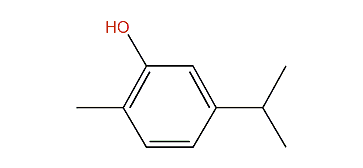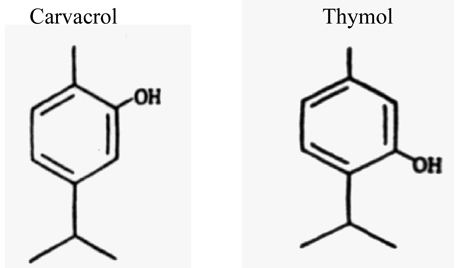Formula C10H14O Density 977 kg/m³ | Molar mass 150.217 g/mol | |
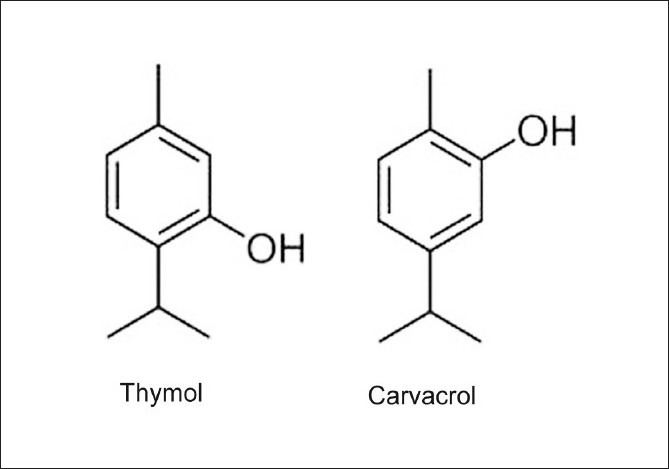 | ||
Carvacrol, or cymophenol, C6H3CH3(OH)(C3H7), is a monoterpenoid phenol. It has a characteristic pungent, warm odor of oregano.
Contents
- Substancia quimica carvacrol
- Natural occurrence
- Biological properties and use
- Synthesis and derivatives
- List of the plants that contain the chemical
- Toxicology
- Compendial status
- References
Substancia quimica carvacrol
Natural occurrence
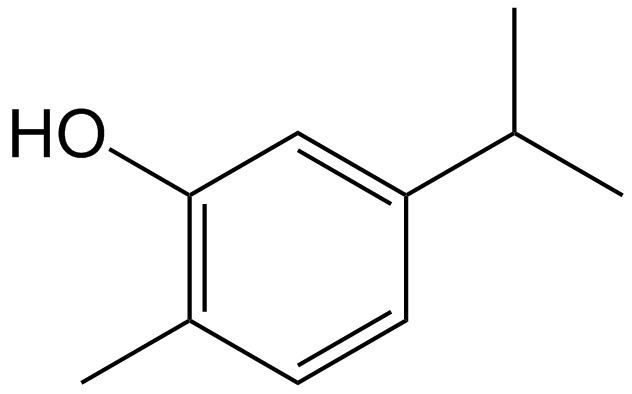
Carvacrol is present in the essential oil of Origanum vulgare (oregano), oil of thyme, oil obtained from pepperwort, and wild bergamot. The essential oil of Thyme subspecies contains between 5% and 75% of carvacrol, while Satureja (savory) subspecies have a content between 1% and 45%. Origanum majorana (marjoram) and Dittany of Crete are rich in carvacrol, 50% and 60-80% respectively.
It is also found in tequila.
Biological properties and use

Carvacrol inhibits the growth of several bacteria strains, e.g. Escherichia coli and Bacillus cereus. Its low toxicity together with its pleasant taste and smell suggests its use as a food additive to prevent bacterial contamination. In Pseudomonas aeruginosa it causes damages to the cell membrane of these bacteria and, unlike other terpenes, inhibits their proliferation. The cause of the antimicrobial properties is believed to be disruption of the bacteria membrane.
It is a potent activator of the human ion channels transient receptor potential V3 (TRPV3) and A1 (TRPA1). Application of carvacrol on the human tongue, as well as activation of TRPV3, causes a sensation of warmth. In addition, carvacrol also activates, but then rapidly desensitizes, the pain receptor TRPA1; this explains its pungency.
It activates PPAR and suppresses COX-2 inflammation.
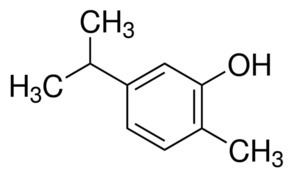
In rats, carvacrol is quickly metabolized and excreted. The main metabolic route is esterification of the phenolic group with sulfuric acid and glucuronic acid. A minor pathway is oxidation of the terminal methyl groups to primary alcohols. After 24 hours, only very small amounts of carvacrol or its metabolites could be found in urine, indicating an almost complete excretion within one day.
A study led by Supriya Bavadekar reports that carvacrol stimulates apoptosis in prostate cancer cells.
Synthesis and derivatives

Carvacrol may be synthetically prepared by the fusion of cymol sulfonic acid with caustic potash; by the action of nitrous acid on 1-methyl-2-amino-4-propyl benzene; by prolonged heating of five parts of camphor with one part of iodine; or by heating carvol with glacial phosphoric acid or by performing a dehydrogenation of carvone with a Pd/C catalyst. It is extracted from Origanum oil by means of a 50% potash solution. It is a thick oil that sets at 20 °C to a mass of crystals of melting point 0 °C, and boiling point 236–237 °C. Oxidation with ferric chloride converts it into dicarvacrol, whilst phosphorus pentachloride transforms it into chlorcymol.
List of the plants that contain the chemical
Toxicology
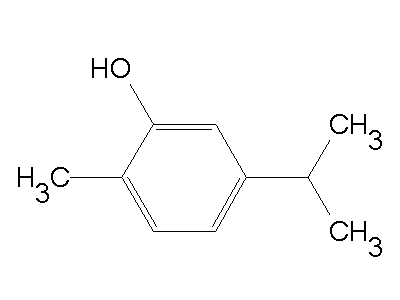
Carvacrol does not have many long-term genotoxic risks. The cytotoxic effect of carvacrol can make it an effective antiseptic and antimicrobial agent. Carvacrol has been found to show antioxidant activity.
Antimicrobial activity:
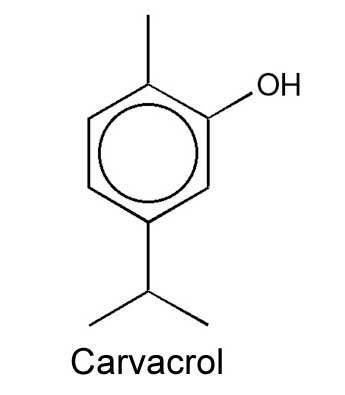
Compendial status

